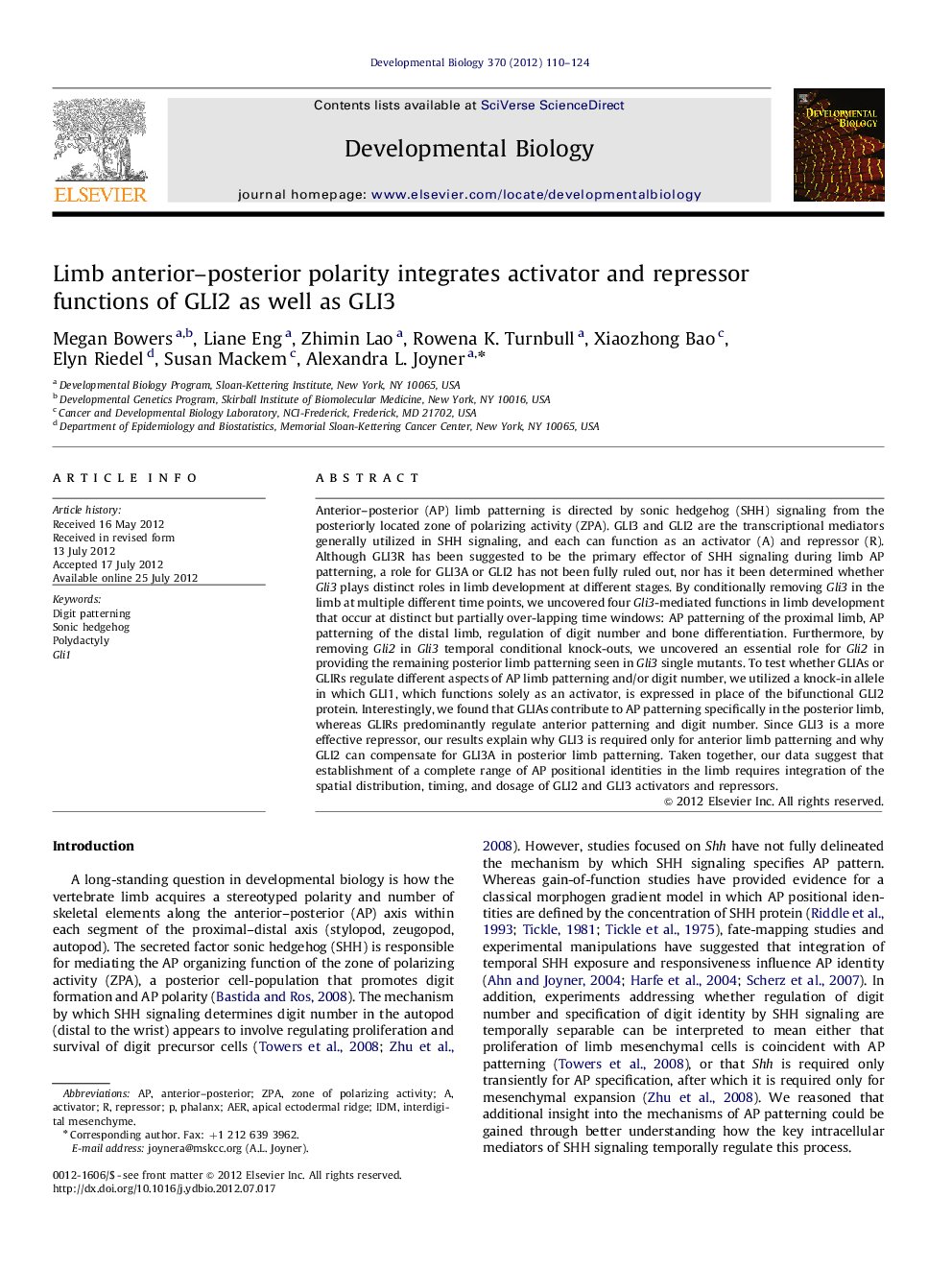| کد مقاله | کد نشریه | سال انتشار | مقاله انگلیسی | نسخه تمام متن |
|---|---|---|---|---|
| 2173287 | 1093709 | 2012 | 15 صفحه PDF | دانلود رایگان |

Anterior–posterior (AP) limb patterning is directed by sonic hedgehog (SHH) signaling from the posteriorly located zone of polarizing activity (ZPA). GLI3 and GLI2 are the transcriptional mediators generally utilized in SHH signaling, and each can function as an activator (A) and repressor (R). Although GLI3R has been suggested to be the primary effector of SHH signaling during limb AP patterning, a role for GLI3A or GLI2 has not been fully ruled out, nor has it been determined whether Gli3 plays distinct roles in limb development at different stages. By conditionally removing Gli3 in the limb at multiple different time points, we uncovered four Gli3-mediated functions in limb development that occur at distinct but partially over-lapping time windows: AP patterning of the proximal limb, AP patterning of the distal limb, regulation of digit number and bone differentiation. Furthermore, by removing Gli2 in Gli3 temporal conditional knock-outs, we uncovered an essential role for Gli2 in providing the remaining posterior limb patterning seen in Gli3 single mutants. To test whether GLIAs or GLIRs regulate different aspects of AP limb patterning and/or digit number, we utilized a knock-in allele in which GLI1, which functions solely as an activator, is expressed in place of the bifunctional GLI2 protein. Interestingly, we found that GLIAs contribute to AP patterning specifically in the posterior limb, whereas GLIRs predominantly regulate anterior patterning and digit number. Since GLI3 is a more effective repressor, our results explain why GLI3 is required only for anterior limb patterning and why GLI2 can compensate for GLI3A in posterior limb patterning. Taken together, our data suggest that establishment of a complete range of AP positional identities in the limb requires integration of the spatial distribution, timing, and dosage of GLI2 and GLI3 activators and repressors.
► GLI3 sequentially regulates AP limb patterning, digit number and bone differentiation.
► Gli2 is essential for regulating autopod AP patterning in limbs lacking Gli3.
► GLI repressors provide anterior pattern, GLI activators contribute posterior pattern.
► Regulation of AP patterning and digit number remains coupled in Gli2/3 double mutants.
► AP polarity integrates the dose, duration and domain of GLI activators and repressors.
Journal: Developmental Biology - Volume 370, Issue 1, 1 October 2012, Pages 110–124